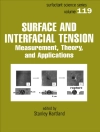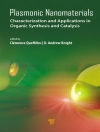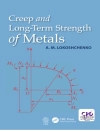Collating otherwise hard-to-get and recently acquired knowledge in one work, this is a comprehensive reference on the synthesis, properties, characterization, and applications of this eco-friendly class of plastics.
A group of internationally renowned researchers offer their first-hand experience and knowledge, dealing exclusively with those biodegradable polyesters that have become increasingly important over the past two decades due to environmental concerns on the one hand and newly-devised applications in the biomedical field on the other.
The result is an unparalleled overview for the industrial chemist and materials scientist, as well as for developers and researchers in industry and academia alike.
Table des matières
List of Contributors XIII
List of Abbreviations and Symbols XVII
Preface XIX
1 Biodegradable Polyesters: Synthesis, Properties, Applications 1
Chi Zhang
1.1 Historical Overview on the Origin of Polymer Science and Synthesis of Polyamides and Polyesters 1
1.1.1 Synthesis of Polyamides 3
1.1.2 Initial Knowledge about Polyesters 5
1.2 Publication Trend of Representative Biodegradable and Nonbiodegradable Polyesters in the Past Century 6
1.3 Biodegradable Polyesters 6
1.3.1 Biodegradable Aliphatic Polyesters and Their Copolymers 7
1.3.1.1 Poly(lactic acid) 7
1.3.1.2 Polyglycolide or Poly(glycolic acid) 12
1.3.1.3 Poly(caprolactone) 15
1.4 Concluding Remarks 18
Acknowledgment 18
References 19
2 Functional (Bio)degradable Polyesters by Radical Ring-Opening Polymerization 25
Seema Agarwal
2.1 Introduction 25
2.2 Radical Ring-Opening Polymerization (RROP) of Cyclic Ketene Acetals 26
2.2.1 Starting Monomers: Cyclic Ketene Acetals 26
2.2.2 Radical Ring-Opening Polymerization Mechanism 28
2.2.3 Functional Polyesters by Conventional and Controlled Radical Homopolymerization of CKAs 30
2.2.4 Functional Polyesters by Copolymerization of CKAs and Vinyl Monomers 31
2.3 Conclusions 41
References 41
3 Microbial Synthesis of Biodegradable Polyesters: Processes, Products, Applications 47
Bernd H.A. Rehm
3.1 Introduction 47
3.2 Biogenesis of Microbial Polyhydroxyalkanoate Granules 48
3.3 The Diversity of Biopolyesters 49
3.4 Polyester (PHA) Synthases are the Key Enzymes 51
3.5 Catalytic Reaction Mechanism 52
3.6 PHA Inclusions: Self-Assembly and Structure 53
3.7 Industrial Production of Bacterial Polyhydroxyalkanoates: PHAs via Fermentation 56
3.8 Application Opportunities of Bacterial Polyhydroxyalkanoates 58
3.8.1 In Energy Industry: Biofuels Based on PHAs 58
3.8.2 In Material Industry: PHAs as Polymeric Materials 59
3.8.2.1 PHAs as Biodegradable Plastics and Fiber Materials 59
3.8.2.2 PHAs as Medical Implant Materials 59
3.8.2.3 PHAs as Drug Delivery Carrier 60
3.8.3 Fine Chemical Industry: PHA Chiral Monomers 60
3.8.4 Application of PHA Granule Surface Proteins 61
3.8.5 Production of Tailor-Made Biopolyester Nanoparticles and Potential Applications 61
3.8.6 Future Development of PHA-Based Industry 62
3.8.6.1 The Development of Low-Cost PHA Production Technology 62
3.8.6.2 Unusual PHAs with Special Properties 63
3.8.6.3 High Value Added Applications 64
3.8.6.4 Other Future Applications 64
3.8.6.5 Microbial Synthesis of Poly(lactic acid) (PLA) 64
3.8.7 Applications of PHA Inclusions as Functionalized Biobeads 65
3.8.7.1 Bioseparations 65
3.8.7.2 Drug Delivery 65
3.8.7.3 Protein Purification 65
3.8.7.4 Enzyme Immobilization 66
3.8.7.5 Diagnostics and Imaging 66
3.8.7.6 Vaccine Delivery 66
3.9 Conclusions and Outlook 67
Acknowledgments 67
References 67
4 Synthesis, Properties, and Mathematical Modeling of Biodegradable Aliphatic Polyesters Based on 1, 3-Propanediol and Dicarboxylic Acids 73
Dimitris S. Achilias and Dimitrios N. Bikiaris
4.1 Introduction 73
4.1.1 Aliphatic Polyesters 73
4.1.2 Production of 1, 3-Propanediol 75
4.2 Synthesis of Aliphatic Polyesters from 1, 3-Propanediol and Aliphatic Acids 78
4.3 Properties of Poly(propylene alkylenedicarboxylates) 80
4.4 Mathematical Modeling of the Synthesis of Aliphatic Polyesters 85
4.4.1 Brief History of Step Reaction Kinetic Modeling 85
4.4.2 Mathematical Modeling of the Esterification Reaction for the Synthesis of Aliphatic Polyesters 87
4.4.2.1 Literature Survey 87
4.4.2.2 Modeling Approaches 88
4.4.2.3 Modeling Using the Functional Group Approach 88
4.4.2.4 Modeling Using an Overall Reaction Model 97
4.4.2.5 Modeling the Effect of Silica Nanoparticles on the Esterification Reaction 98
4.4.3 Modeling the Polycondensation Reaction Kinetics for the Synthesis of Aliphatic Polyesters 100
4.4.3.1 Reaction Scheme 100
4.4.3.2 Development of the Mathematical Model 101
4.4.3.3 Simulation Model Results 102
4.5 Conclusions 105
References 106
5 Crystallization of Poly(lactic acid) 109
Maria Laura Di Lorenzo and René Androsch
5.1 Introduction 109
5.2 Crystal Polymorphism in Poly(L-lactic acid) 111
5.3 Kinetics of Crystal Nucleation 114
5.4 Crystal Growth Rate 119
5.5 Influence of Comonomer Content 122
5.6 Stereocomplex Crystals of Poly(L-lactide)/Poly(D-lactide) 123
5.7 Conclusions 125
References 125
6 Shape Memory Systems with Biodegradable Polyesters 131
József Karger Kocsis and Suchart Siengchin
6.1 Introduction 131
6.2 Shape Memory Polymer Systems 133
6.2.1 Homopolymers and Composites 134
6.2.1.1 Linear 134
6.2.1.2 Cross-linked 134
6.2.2 Copolymers and Composites 138
6.2.2.1 Linear 138
6.2.2.2 Cross-linked 140
6.2.3 Polyester-Containing Polyurethanes and Related Composites 142
6.2.4 Blends and Composites 142
6.2.4.1 Linear 144
6.2.4.2 Cross-linked 145
6.2.5 Polymers with Thermosets 145
6.2.5.1 Conetworks 145
6.2.5.2 Semi-Interpenetrating Network 146
6.2.5.3 Interpenetrating Network 148
6.3 Applications 148
6.4 Outlook and Future Trends 149
Acknowledgments 149
References 149
7 Electrospun Scaffolds of Biodegradable Polyesters: Manufacturing and Biomedical Application 155
Patricia Pranke, Daniel E.Weibel, and Daikelly I. Braghirolli
7.1 Introduction 155
7.2 Preparation of Polyesters for the Electrospinning Method 157
7.3 Improving the Bioactivity of Electrospun Polyesters 160
7.3.1 Surface Modification Techniques 160
7.3.1.1 Wet Chemical Surface Modification 160
7.3.1.2 Plasma 162
7.3.1.3 Ozone 165
7.3.1.4 Ultraviolet Radiation 167
7.3.1.5 Functionalization of Polyester Electrospun Scaffolds with Bioactive Molecules 170
7.3.2 Pretreatments: Association of Polyesters with Biomolecules before Electrospinning 172
7.3.2.1 Blends of Polyesters with Other Polymers and/or Biomolecules 172
7.3.2.2 Co-electrospinning and Electrospraying 174
7.4 Applications 175
7.5 Conclusions 180
References 180
8 Systematic Development of Electrospun PLA/PCL Fiber Hybrid Mats: Preparation, Material Characterization, and Application in Drug Delivery 191
Hazim J. Haroosh and Yu Dong
8.1 Introduction 191
8.2 Material Preparation and Characterization 193
8.3 Morphological Observations 197
8.3.1 Effect of Solution Viscosity 197
8.3.2 Effect of Blend Ratio 198
8.3.3 Effect of Solvents 200
8.4 Crystalline Structures 202
8.5 Thermal Properties 204
8.6 FTIR Analysis 205
8.7 TCH Drug Release 206
8.8 Fiber Biodegradability 207
8.9 Conclusions 208
References 209
9 Environment-Friendly Methods for Converting Biodegradable Polyesters into Nano-Sized Materials 215
Stoyko Fakirov
9.1 Tissue Engineering in Medicine and the Polymeric Materials Needed 215
9.2 MFC Concept and its Potential for Biomedical Applications 219
9.3 Effect of Hydrogen Bonding in Polymer Blends on Nano-Morphology 223
9.4 Mechanism of Nano-Morphology Formation in Polymer Blends without and with Hydrogen Bonding 227
9.5 Biomedical Application Opportunities of Nano-Sized Polymers 229
9.6 Conclusions 231
Acknowledgments 232
References 232
10 Highly Toughened Polylactide-Based Materials through Melt-Blending Techniques 235
Jérémy Odent, Jean-Marie Raquez, and Philippe Dubois
10.1 Introduction 235
10.1.1 Polylactide as a Bio-based Alternative 235
10.1.2 Polylactide and Its Industrial Production 237
10.1.3 Main Properties of PLA 240
10.2 Polylactide Strengthening and Strategies 242
10.2.1 Impact and Toughening Mechanisms: General Considerations 243
10.2.2 Rubber-Toughened Polylactide 248
10.2.3 Nanoparticle-Mediated Compatibilization Process 257
10.2.4 Interpenetrating Networks and Self-Assembling of PLA-Based Materials 261
10.3 Crystallization-Induced Toughness and Morphological Control 263
10.4 Conclusions 268
References 268
11 Electrospun Biopolymer Nanofibers and Their Composites for Drug Delivery Applications 275
Yue-EMiao and Tianxi Liu
11.1 Introduction 275
11.2 Simply Blended Drug/Biopolymer Nanofibers by Conventional Electrospinning for Drug Delivery 276
11.2.1 Drug-Loaded Single-Component Biopolymer Nanofibers 277
11.2.2 Drug-Loaded Multicomponent Biopolymer Nanofibers 279
11.2.3 Drug-Loaded Nanoparticle/Biopolymer Composites 280
11.3 Uniquely Encapsulated Drug/Biopolymer Nanofiber Systems for Drug Delivery 283
11.3.1 Coaxial Electrospun Drug/Biopolymer Nanofibers 283
11.3.2 Emulsion Electrospun Drug/Biopolymer Nanofibers 286
11.3.3 Electrosprayed Drug/Biopolymer Nanofibers 289
11.4 Conclusions and Outlook 292
Acknowledgment 293
References 293
12 Biodegradable Polyesters Polymer–Polymer Composites with Improved Properties for Potential Stent Applications 299
Lloyd D. Kimble and Debes Bhattacharyya
12.1 Introduction 299
12.2 Stenting Development 300
12.2.1 Bare Metal Stents 300
12.2.2 Coated Metal Stents 301
12.2.3 Drug-Eluting Stents 301
12.2.4 Recap and the Next Phase of Stent Evolution: Biodegradable Stents 301
12.3 Stents – an Engineering Point of View 302
12.3.1 Stent Deployment: the Need for Ductility 302
12.3.2 Importance of Creep after Implantation 303
12.3.3 A Vessel Is Not Static: Material Fatigue Considerations 304
12.3.4 Material Degradation: a Critical Variable 304
12.3.5 Engineering Solutions versus Clinical Implications 305
12.4 Biodegradable Stents 305
12.4.1 Selection Criteria for Biodegradable Stent Materials 305
12.5 The MFC Concept for Preparation of Polymer–Polymer Composites with Superior Mechanical Properties 309
12.5.1 Preparation of Polymer–Polymer Composites from PLLA/PGA Blends 310
12.5.2 MFC Film Molding 310
12.6 Properties of PLA/PGA Polymer–Polymer Nanofibrillar Composites 311
12.6.1 Morphology of PLA/PGA Nano-/Microfibrillar Polymer–Polymer Composites 311
12.6.2 Mechanical Properties of PLA/PGA Nano-/Microfibrillar Polymer–Polymer Nanofibrillar Composites 314
12.6.3 Viscoelastic Behavior of PLLA/PGA Nano-/Microfibrillar Polymer–Polymer Composites 314
12.6.4 Analysis of Properties of PLLA/PGA Nano-/Microfibrillar Polymer–Polymer Composites with Respect to Their Potential Stent Applications 316
12.7 Conclusions and Outlook 317
References 318
13 Biodegradable Polyester-Based Blends and Composites: Manufacturing, Properties, and Applications 321
Raj Das and Kariappa M. Karumbaiah
13.1 Introduction 321
13.2 Reinforcements in Polymer Composites 322
13.2.1 Glass and Carbon Fiber Reinforcements 323
13.2.2 Natural Fiber Reinforcements 323
13.2.3 Synthetic Fiber Reinforcements 324
13.3 Blends of Biodegradable Polyesters 325
13.4 Composites of Biodegradable Polyesters 326
13.4.1 Composites Reinforced with Carbon and Glass Fibers 326
13.4.2 Composites Reinforced with Natural Fibers 327
13.4.3 Polymer–Polymer Composites Based on Biodegradable Polyesters 330
13.5 Application of Biodegradable Polyester-Based Blends and Composites 331
13.5.1 Biomedical Applications 331
13.5.2 Commodity Applications 333
13.6 Summary 334
References 335
Index 341
A propos de l’auteur
Stoyko Fakirov is currently visiting professor in the Centre for Advanced Composite Materials at the University of Auckland, New Zealand. He studied chemistry at the University of Sofia, Bulgaria, and received his Ph D from the Lomonossov State University in Moscow. Stoyko Fakirov is member of the editorial board of seven international journals on polymers and advanced materials. He has published more than 300 peer-reviewed papers, edited or co-edited thirteen books on polymer science and holds nine US patents.












